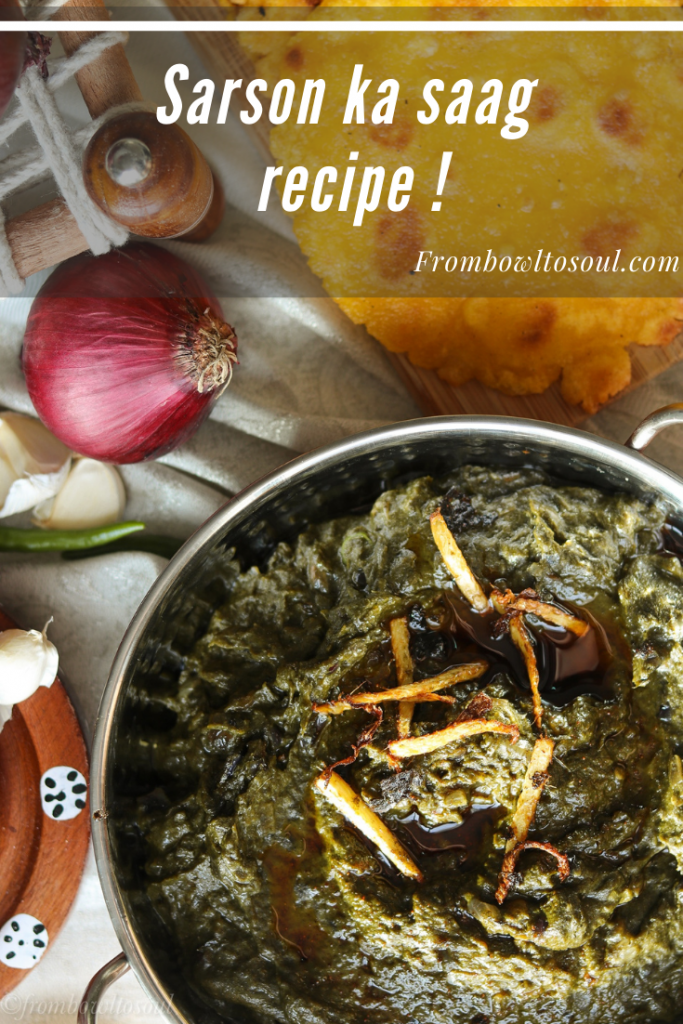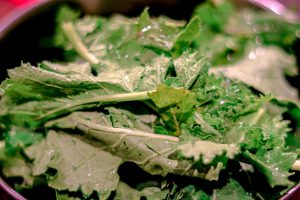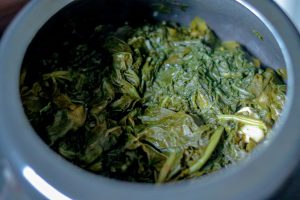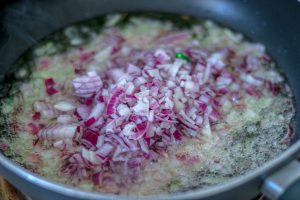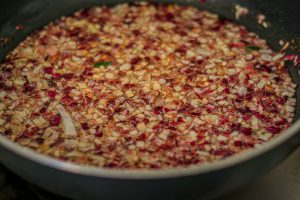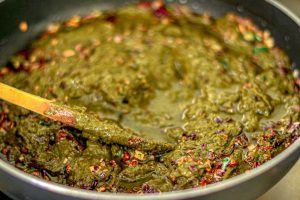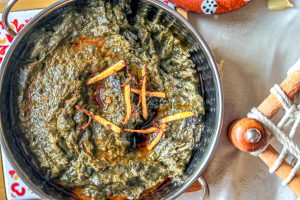Sarson ka saag Recipe

Sarson ka saag recipe- A classic punjabi winter dish , traditionally made using a mix of sarson (mustard greens), spinach and bathua. The mix of the leaves is cooked slowly , blended and tempered in a luscious mix of ghee/ white butter and spices to make this rich , lush , cozy winter delicacy.
It is traditionally served with a side of Makki ki roti ( Maize flour bread), radishes and green chillies, and if you love a glass of lassi to go with it.. who can say no to it ?
Get me all the greens in winters. Yes, who doesn’t love having fresh winter greens. There is an abundance of green vegetables in this season, and the body and mind craves for these.
My favourite for winters is Sarson ka saag(Mustard leaves curry), with Makki ki roti (cornmeal flatbread), all topped and slathered in ghee/ white butter.
Traditional sarson ka saag and alternatives to the saag mix
Saag traditionally is cooked with fresh mustard leaves and a mix of some bathua leaves(lamb’s quarters) and palak leaves (spinach), along with spices and tempered in lots of ghee.
I have been unable to get bathua leaves in the UK, so i only add spinach leaves with mustard leaves.
You can always add a little mix of few broccoli florets, spinach leaves and /or kale leaves to saag. If you can get a handful of bathua , please do not miss to add it ,for that authentic punjabi flavour .
If fresh mustard leaves are not available or you are short on time for cooking, you can always opt for canned mustard leaves / sarson ka saag. That saves a lot of work of cleaning, washing and boiling the fresh mustard leaves.

Making sarson ka saag
For almost 1 kg of saag leaves(mustard leaves) you need around 500gms of other leaves/greens.
If bathua is not available, you can use just spinach and mustard leaves. Sometimes i add a few broccoli florets, and fresh Kale leaves.
If you are using one can of mustard leaves, you can use half the amount of other green leaves.
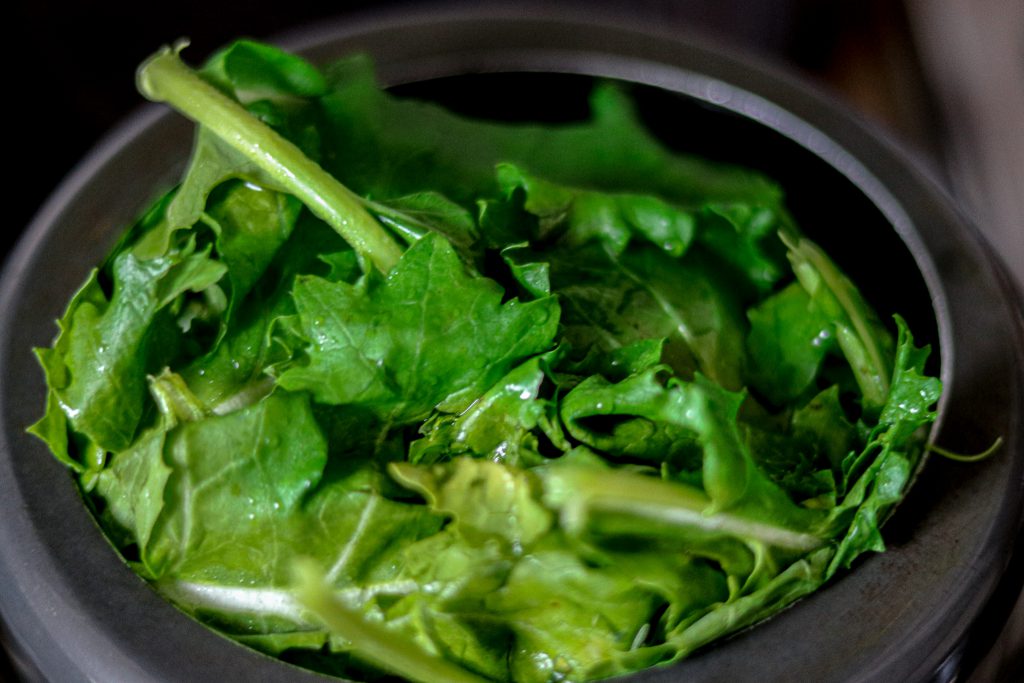
Cleaning and cooking the saag leaves (mustard greens)
Roughly tear the leaves from the stems. If stems are fresh and tender use the stems as well, don’t throw them away.
Rinse all the leaves and stems with enough water, around 4-5 times making sure any soil and dirt is washed off. Once rinsed and clean, the leaves are ready to cook.
In a pressure cooker add the leaves, roughly chopped ginger, garlic, green chillies, salt, and hing (asafoetida powder ).
Do not add water, as the leaves will leave the water. Now pressure cook for almost 30 -40 minutes.

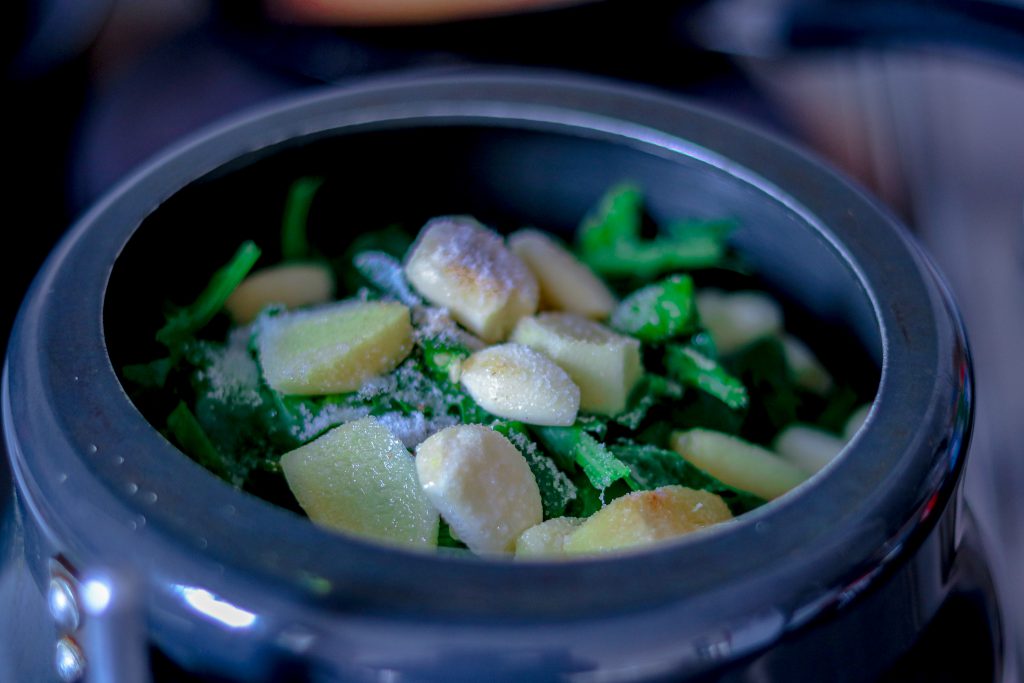
Preparing sarson ka saag for blending
Once cooked, let the leaves cool down. If there is too much water in the mix, just pass it through the sieve and keep aside. Do not throw the water.
Now add Makki ka aata( cornmeal/ maize flour). Mix well and blend the mix roughly .
It should not be a very smooth paste like consistency , so just blend/ grind it enough that you get a roughly blended mixture (not smooth ).
After the leaves and spices are blended together along with the flour, check if the consistency is right . If it is too thick add some water (that you saved) .
If the consistency is right , straightaway cook saag on low heat stirring continuously to bind it all together.
Cook it for 10-15 minutes, the raw taste of the flour goes away.
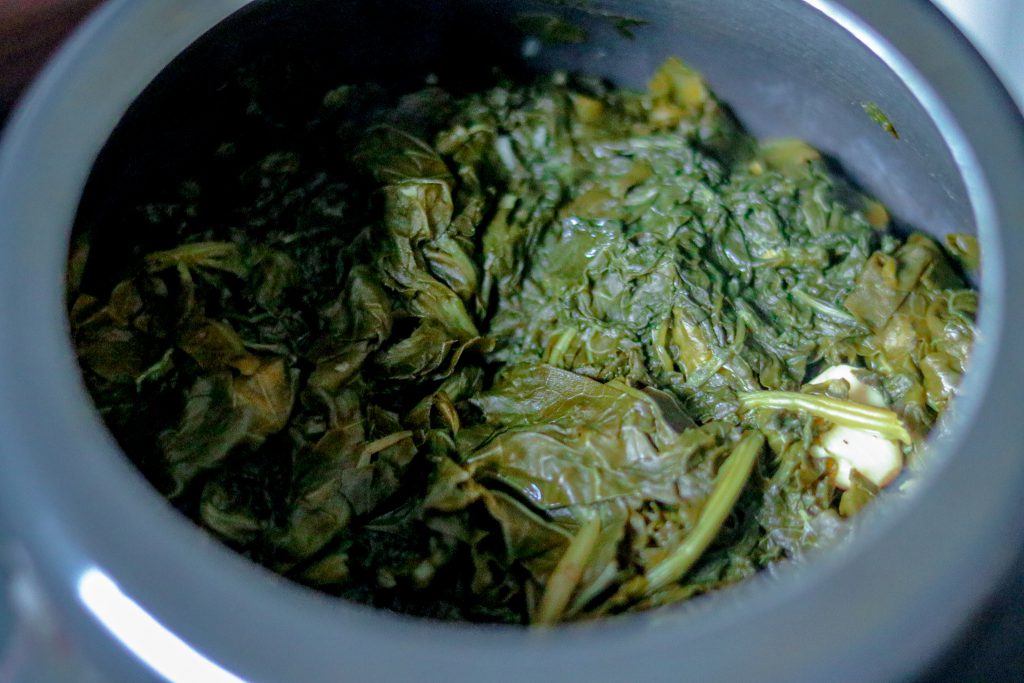
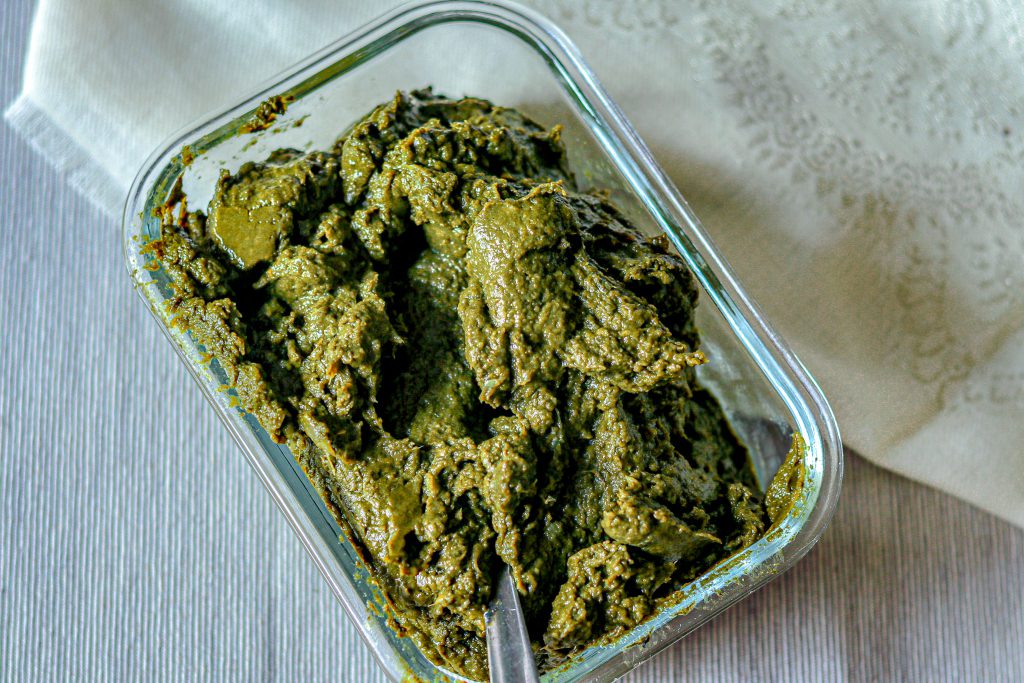
Secret tadka- Spices tempered in mustard oil for that rustic flavour
Sarson ka saag tastes amazing with ghee tadka, but before that I add another tadka to enhance the rustic mustard flavour and overall taste of the saag.
This is an additional tempering /tadka done in mustard oil . This step is optional but it adds so much depth to the taste and flavour of sarson ka saag.
Heat some mustard oil – when using mustard oil you need to take care of the below-
Mustard oil is most often heated in the pan, with no other ingredients, until it reaches a temperature where the first wisps of smoke appear (about 480°F/250°C).
Immediately take it off the heat and allow to cool to a more reasonable frying temperature (around 360°F/180°C) before adding other ingredients.
This procedure removes the acrid taste of the raw oil and renders it quite pleasant.
In the oil add Jeera (cumin seeds), whole red chillies/ kashmiri Mirch (or chilli flakes if you want a mild heat), hand crushed kasoori methi .
Let everything crackle for a few seconds and add it to the cooked saag.
At this stage , saag is ready for the final tadka/ tempering. If you want you can cool saag and store it in freezer at this stage.
Cooking a simple Ghee and onion tadka
The basic tadka that i add to saag is simple ghee, onions and chopped green chillies. However there are alternatives you can try for different flavours. These are suggested in the next section.
To make this Tadka, heat ghee. Fry chopped chillies for 2-3 minutes in ghee. Add chopped onions to it. Fry till the onions are golden brown.
Add a little deghi mirchi powder (for a nice red colour). Immediately add it to the cooked hot saag.
Mix and serve ,topped with white butter or ghee with a side of hot Makki rotis, raddish ,and green chillies .
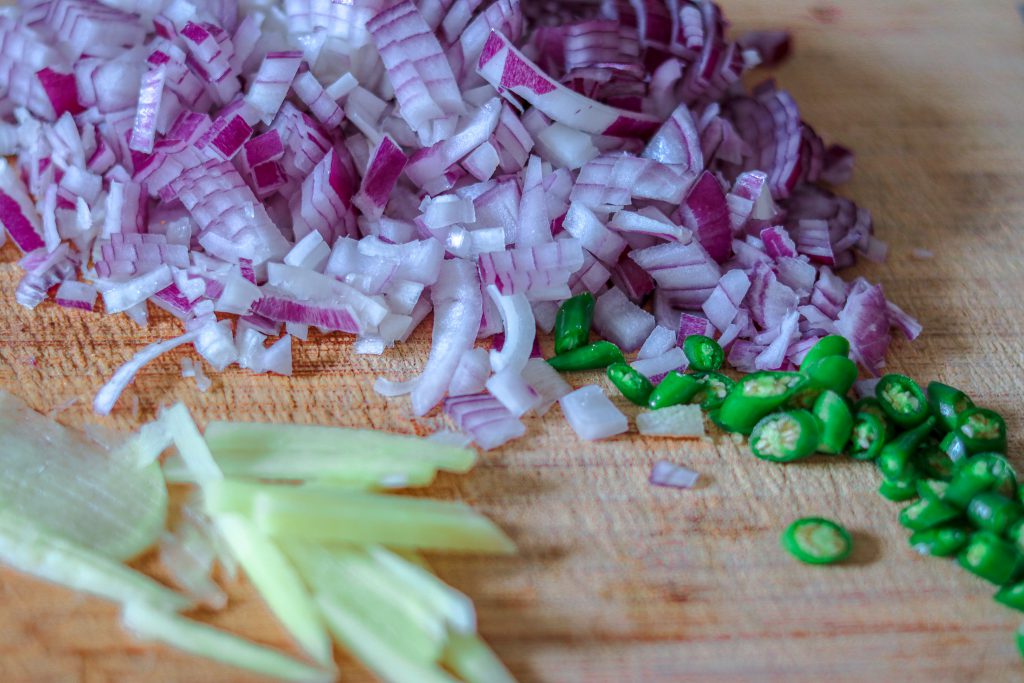
Saag recipe
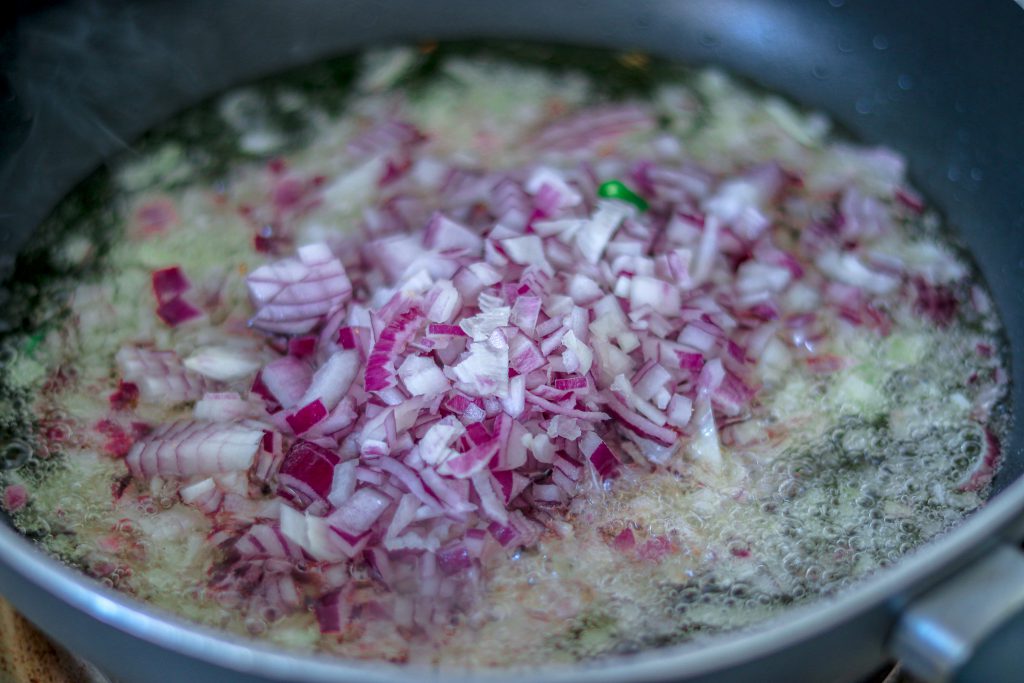
Saag recipe
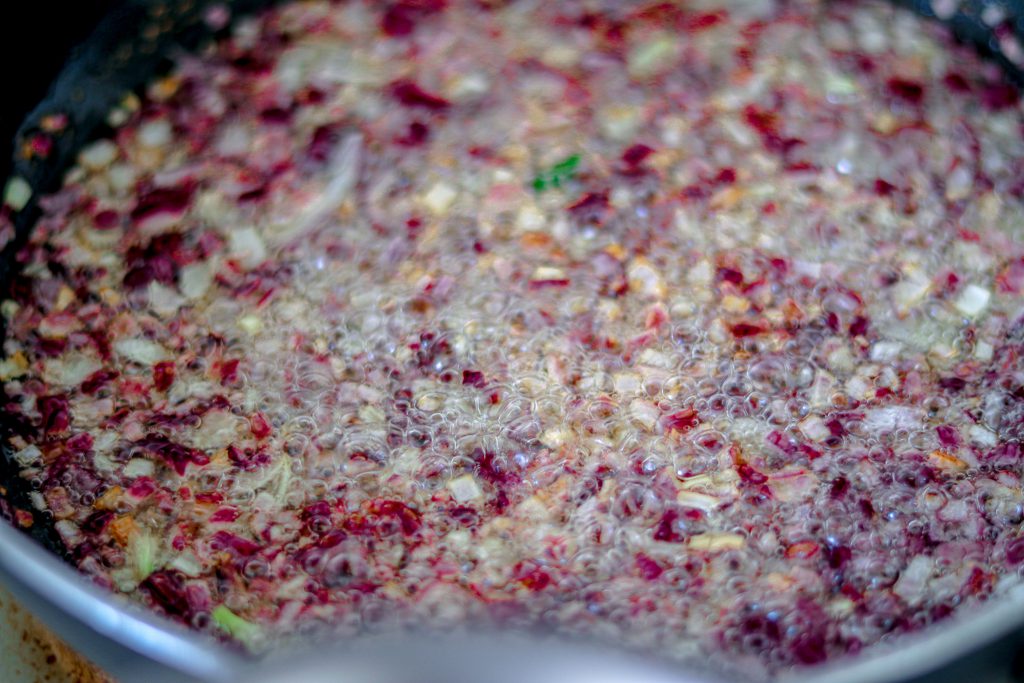
Saag recipe
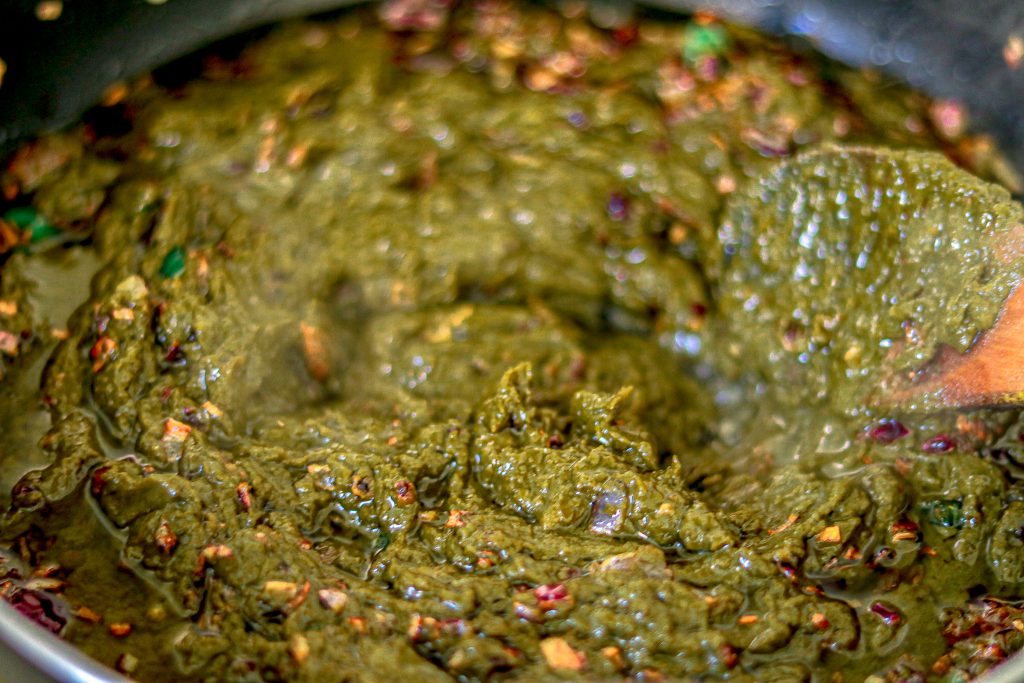
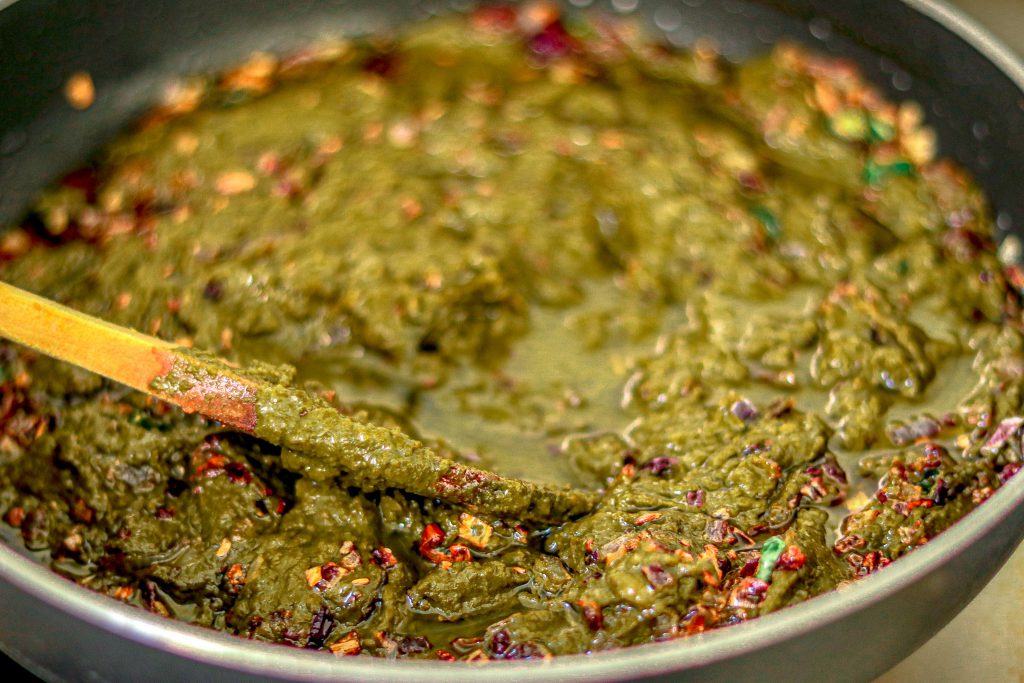
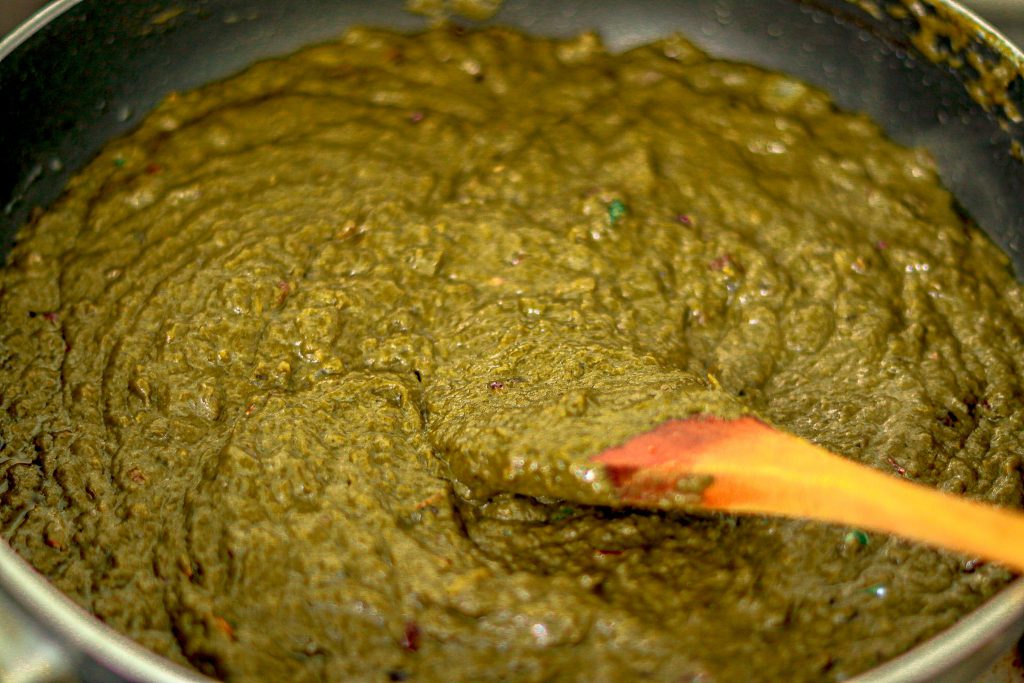
Options for sarson ka saag tadka
Whenever i heat saag the second time, i add either all of the below ingredients together or few of these to tadka .
My basic go to is a simple tadka for saag in ghee with onions and green chillies. Sometimes i add ginger along with onions and other times its just ghee and ginger Juliennes fried in it.
Once they turn golden and crispy , just top the hot saag with this.
You can also fry onions and tomatoes and then add this tempering to the prepared saag.
To make lehsuni (garlic flavoured) tempering /Tadka, heat ghee and add sliced garlic to the ghee. Fry it for 2 minutes and add to the cooked saag.
But yes , if it is saag it has to be cooked in ghee, and then do top with extra white butter or butter while serving.
Storing and freezing saag
Saag can be stored well in the fridge / freezer . I normally cook it in excess (yes because cooking saag is a labour of love , and not something i love cooking often ) .
Take out the amount of saag you want for one meal, and freeze the rest. So i add tadka to the amount i want to cook and save the rest.
The frozen saag can be taken out the day want to cook. To make it fresh again, simply heat the saag, and add fresh ghee tadka with any of the options suggested above.
Believe me , saag is much more tastier the next time you heat it!
Serving Sarson ka saag
Sarson ka saag is best served along with hot makki rotis , topped in ghee , white butter or butter, along with fresh radish salad / onions and green chillies.
If you have any more ideas of serving it, do let me know in the comments.
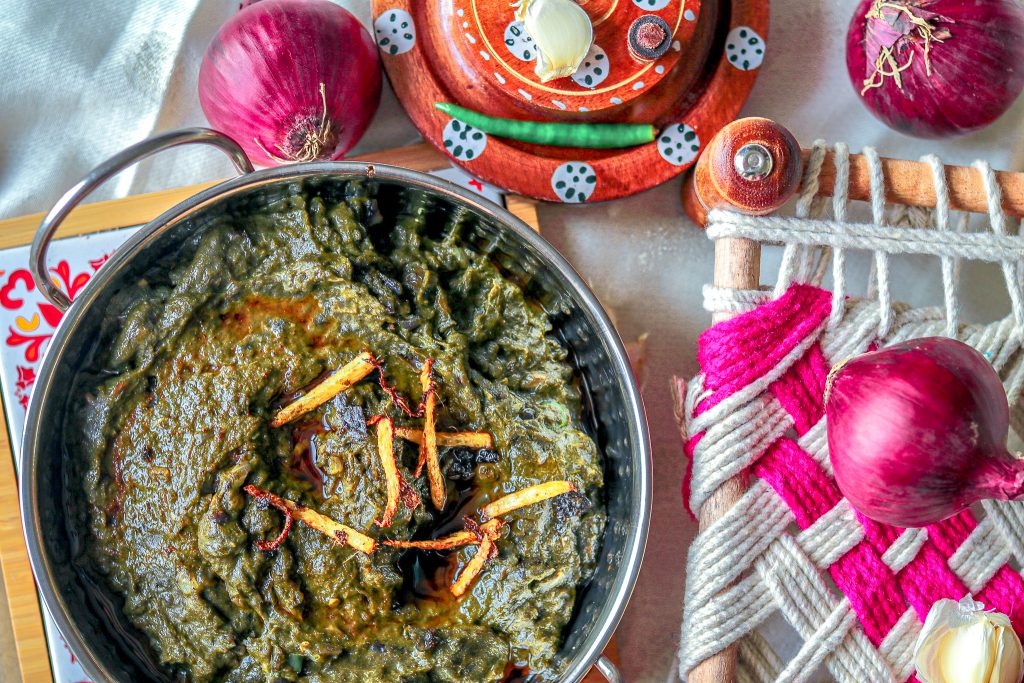
If you try this and like this recipe, please rate it by clicking the stars below. And don’t forget to like , share the recipe and tag us on Instagram or Facebook using #frombowltosoul_ and #frombowltosoul . Please Comment below for any queries, suggestions and ideas .I would love to hear from you.
Pin this post for later– click on any of the pictures to pin this for future.
Join the “From bowl to soul” mailing list to hear more from us. Sign up here ?
Recent on the blog
- Roasted garlic butter
- Butter chicken recipe | Murgh Makhani (authentic indian curry recipe)
- Clear Vegetables and Beans soup
- Just the right holiday gift ideas for the season- A holiday gift guide for your loved ones.
- Hari mirch murgh / Green chilli chicken recipe – A simple delicious party pleaser
- Roasted garlic butter
- Butter chicken recipe | Murgh Makhani (authentic indian curry recipe)
- Clear Vegetables and Beans soup
- Just the right holiday gift ideas for the season- A holiday gift guide for your loved ones.
- Hari mirch murgh / Green chilli chicken recipe – A simple delicious party pleaser
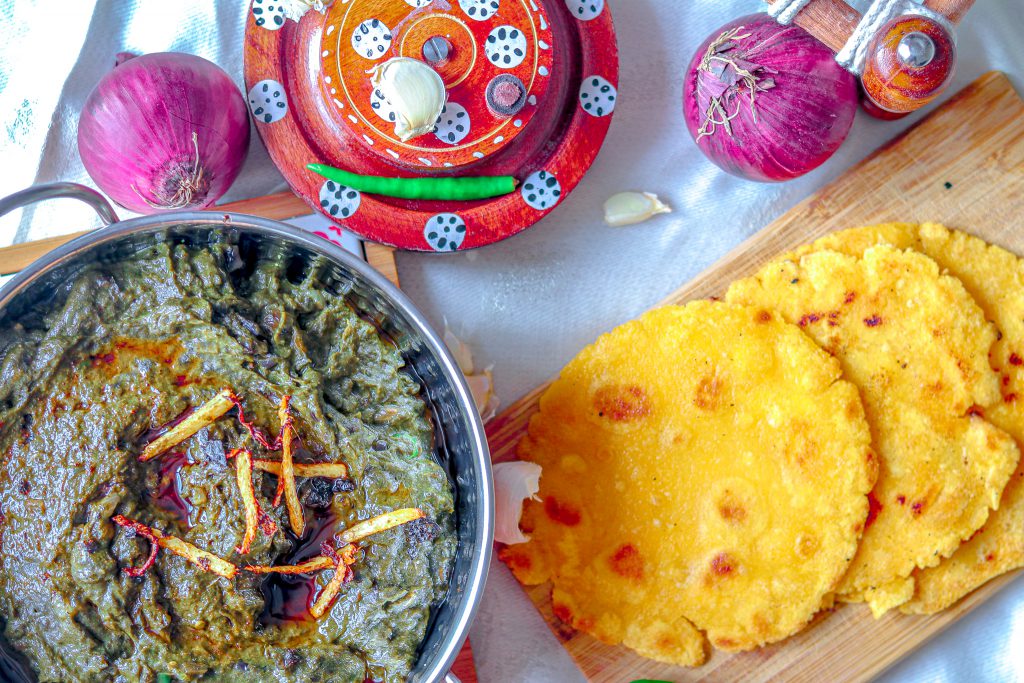
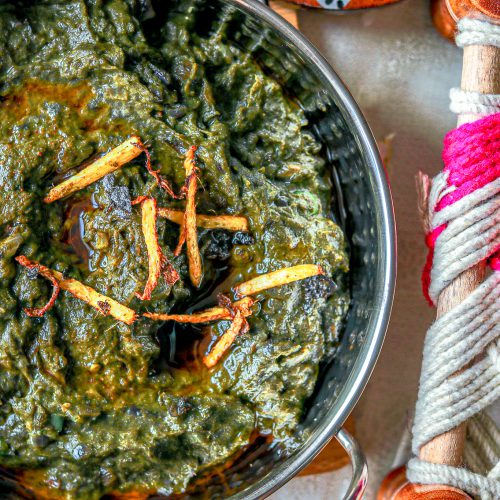
Sarson ka saag recipe
Equipment
- pressure cooker
Ingredients
Boiling Saag
- 1 Kgs Mustard leaves/ Sarson Rinsed , washed , and roughly chopped/ or use 1 can of saag
- 500 gms spinach leaves refer notes in the post
- 1 whole garlic cloves
- 2-3 inch slice of ginger
- 4-5 green chillies
- 1/8 tsp hing (asafoetida powder)
- Salt to taste
First tempering/ tadka
- 2 tbsp Mustard oil
- 2-3 whole red chillies or use 1 tsp chilli flakes
- 1 tsp cumin seeds / Jeera
- a handful crushed kasoori methi leaves
Tempering/ Tadka
- 4-5 Tbsp Ghee
- 2 onions chopped
- 2-3 green chillies chopped
- Other ingredients (ginger/ garlic / tomato ) optional Read post and notes for details
Instructions
Cleaning and cooking the mustard leaves
- Rinse all the leaves , along with the stems (If the stems are tender , no need to throw them, you can use them ).Rinse with enough water around 4-5 times making sure any soil is removed.Roughly separate from the stems, tear them and these are ready to be prepared.

Preparing the saag for blending
- In a pressure cooker add the leaves, roughly chopped ginger, garlic, green chillies, salt, and hing.

- Do not add water, as the leaves will release enough moisture . Now pressure cook on slow heat for almost 30 -40 minutes.
- Let the saag cool down. If there is some water, just pass it through the sieve and keep aside. Do not throw the water.

- To the saag mix, add Makki ka aata( cornmeal). Mix well and blend the saag roughly with a hand blender , ensuring there are no lumps.We do not want a very smooth paste like consistency . Just blend/ grind it enough not to make a smooth paste

- Then cook saag on low heat stirring continuously binding it together with the cornmeal flour. Cook it till the raw taste of the flour goes away.ensuring that makki ka aata is cooked properly and has no raw taste
First tempering / Tadka
- Heat some mustard oil to its smoking point- Instructions in the post.
- In the oil add Jeera (cumin seeds), Whole red chillies (or chilli flakes if you want a mild heat), kasoori methi . Let everything crackle for a few seconds and add it to the cooked saag, and mix well.
Second tempering/ Tadka
- Heat ghee.

- Fry chopped chillies for 2-3 minutes in ghee

- Add chopped onions to it. Fry till the onions are golden brown.

- Add a little deghi mirchi powder (for a nice colour). Immediately add it to the cooked hot saag.Mix well.

- Serve saag topped with white butter , butter or ghee with a side of hot Makki rotis, raddish ,and some green chillies .

Notes
Pin this post for later– click on any of the pictures to pin this for future.
